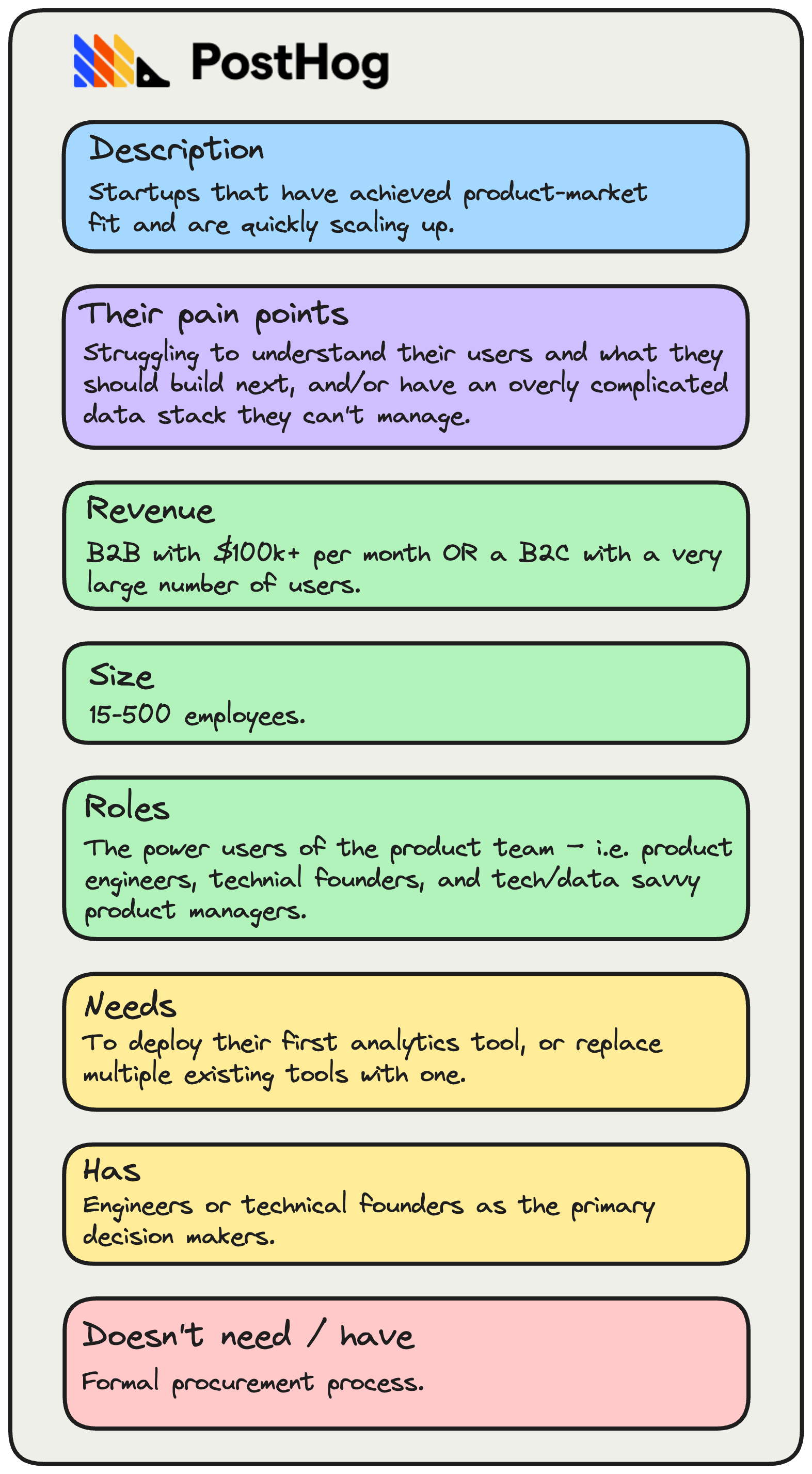How to brand your startup so it isn't boring
Aug 28, 2024

On this page
- "What would stop me from using this thing?"
- Your company needs to stand for something
- You need to create your brand for someone...
- ...but your brand must be a reflection of you
- Your brand isn't just your website...
- You can't 80:20 everything
- Doesn't this imply doing everything to a really high standard and a ridiculous workload?
The world would be more fun if most startups hadn't undergone a personality vasectomy.
Be it the human instinct for conformity, or the inevitable groupthink of similar people solving similar problems, the majority of the world's software companies feel samey.
There's no shortage of excuses for this. First, you want to get the Minimum Viable Product built and validated. Next, you need to make money; you're going to fail without it.
Creating a pretty website won't help with either, right?
Wrong.
"What would stop me from using this thing?"
This was the most important conversation Tim and I had before launching PostHog.
It was going to be free on launch day, but we knew users would still be wary of wasting their time deploying a piece of software produced by a two-person startup.
Being open source helped. People could inspect the code for themselves, but we concluded the majority would turn away at the website, the docs, and the readme before glancing at a line of code.
That's why we set out to create a website and brand that felt both unique and intentional, including a public handbook that explained what we were doing, why, and how.
As a counter example, an obviously templated or one-pager style website signals:
The product may not be secure. If a startup doesn't care about having their own website design, will they care about security? A lack of demonstrated competence shows a lack of attention to detail.
The team behind the product isn't very strong. The product probably won't improve quickly, or become a "must use" tool. Those startup launches that everyone hears about? They've put energy into their appearance.
The product may not exist in a few more weeks. Why should a potential customer invest time in a product if it's obvious the team making it threw its website together in a day, or ripped it from an existing template?
So, as frustrating as it might be to spend extra time and effort on something "superficial" like a website, remember you're providing your product to human beings. Everyone judges books by their covers.
Your company needs to stand for something
Take these two examples of missions for PostHog:
- Open-source product analytics
- We equip every developer to build successful products
There is a trade-off between the two.
The first is very clear. We started with it when this is what we had.
As we became more well-known, and as we added lots of products into our platform, we shifted to the latter mission. It's a better reflection of why our company exists – it's more than just a piece of software.
We introduced it because the company was getting larger, and the scope of what we were setting out to achieve had expanded. We now have 8+ products, and we produce a ton of content to help engineers build better products.
Clarity and simplicity was useful in the early days, but sacrificing some of that clarity helped us stand for something broader that gives us more purpose.
You need to create your brand for someone...
One of the most important things we did was to create an Ideal Customer Profile.
When we launched, we weren't sure quite how focused we'd need to be on engineers versus product managers. After launching, we realized that we could go all-in on engineers and technical founders, who now make up around 80% of our users. Our brand and product has become more oriented towards these users as a result.

Here are some ways we got more specific for this audience after we zeroed-in on it:
We added API examples to our website.
We added a "you'll hate PostHog if" section to our homepage, which calls out many pet hates that engineers have when trying to buy, install and use more traditionally-targeted software that they are made to implement.
We chose a more flexible pricing model – it's far more complex, but it's much better value. We felt more technical people would be happier than non-technical people coping with more complexity to get a better deal. We want developers to be able to manage their spend with us across our eight products, not a "single price".
In the product, we worked on SQL access, so technical people could get to the underlying data and debug things.
We redesigned our entire UX to have higher information density, dark mode and more flexibility.
...but your brand must be a reflection of you
We have often been impressed at the level of polish that others can achieve.
Quoting Cory, our lead designer: "We aren't the best in the world at being polished, but we can be the best in the world at being ourselves".
We sometimes make business decisions based on who we are, and what we want to do – not always what may, for example, generate the most revenue growth.
For instance, initially we planned to have an open core model. We'd offer open-source software, and some people in big enterprises, would self-host and pay for the party for everyone else.

We felt this would work as there was no real competition, whereas in cloud we had lots of competitors with over $100m in annual revenue. However, we simply love shipping new features, and after our first hackathon, we wound up with session replay (i.e. a new feature big enough to be its own product), which took off, and this resulted in a multi-product approach.
As a result, we could compete in cloud by being way wider than everyone else. Eventually, we removed our paid, self-hosted offering entirely, and went all in on multi-product in cloud, focused on "getting in first" with earlier-stage companies instead of the largest enterprises. Our motivation, ambition and growth all took off as a result.
And yes we kept the open-source product, though we stress it's for hobbyists because it's cheaper and easier for companies to have us host if for them.
Your brand isn't just your website...
...it's how your company is experienced by others. Your company is your product and:
- How much you invest in each function in your company relative to each other.
- What you look for when you hire people, and it's the process you use to hire with.
- How you decide what to build. Do you ship features early, or do you focus on meeting the needs of your largest customer with every new thing?
- How much you are design vs. engineering vs. product vs. sales vs. marketing-led. How many people are in each function, but also your processes for deciding what to work done.
- The frequency and style with which you email your customers, for marketing, product updates or your activation flow.
- The kind of people you hire into customer success or sales.
- The background experience of those in your marketing team.
- The tone of voice on your website.
- Who is on your board.
- How your pricing works.
- How your social media works.
- How helpful you are to random founders that message you.
- The marketing channels you pick.
- What you talk about in your blog. I'm writing this piece for brand reasons (transparency / equipping developers with knowledge to build successful products), nothing else. I don't care or try to generate conversions from this post, I just want to leave an impression on people. And it's who I am – I'm writing this to pass the time on a long plane journey.
You can't 80:20 everything
A lot of design or brand work has an increasing marginal return. This is because a great brand's purpose is that you stand out. You do not stand out by being average!
So, if you're serious, go nuts on your brand. Go weirdly hard.
To give you an example, we built a merch store:
We started with me emailing users for their address and size, ordering merch and having it delivered to my house, and me then posting it internationally to them. Do things that don't scale.
Next, we set up a store on Shopify. I just threw our logo onto an amusingly wide selection of items – PostHog shower curtain, anyone? It was cool to just have merch for sale and a way of giving it.
Then we created custom components and built it into our website directly, so it's perfectly integrated.
Then we booked a photo shoot and took custom photos of our team wearing everything.
Now we're working on limited editions of certain items to create collectible series of t-shirts
Who knows what happens next!
This single thing is easy enough to copy, but it's just one activity among hundreds that builds a brand.

Doesn't this imply doing everything to a really high standard and a ridiculous workload?
Yes. You can be iterative with it, though. Not everything was amazing on day one, but we keep improving and tweaking everything over time.
So get out there, and be bold
If your brand isn't going to turn off some people that might have bought your product, then it isn't strong enough to stand out.
Engage your best customers with your brand, and put off your worst ones.

